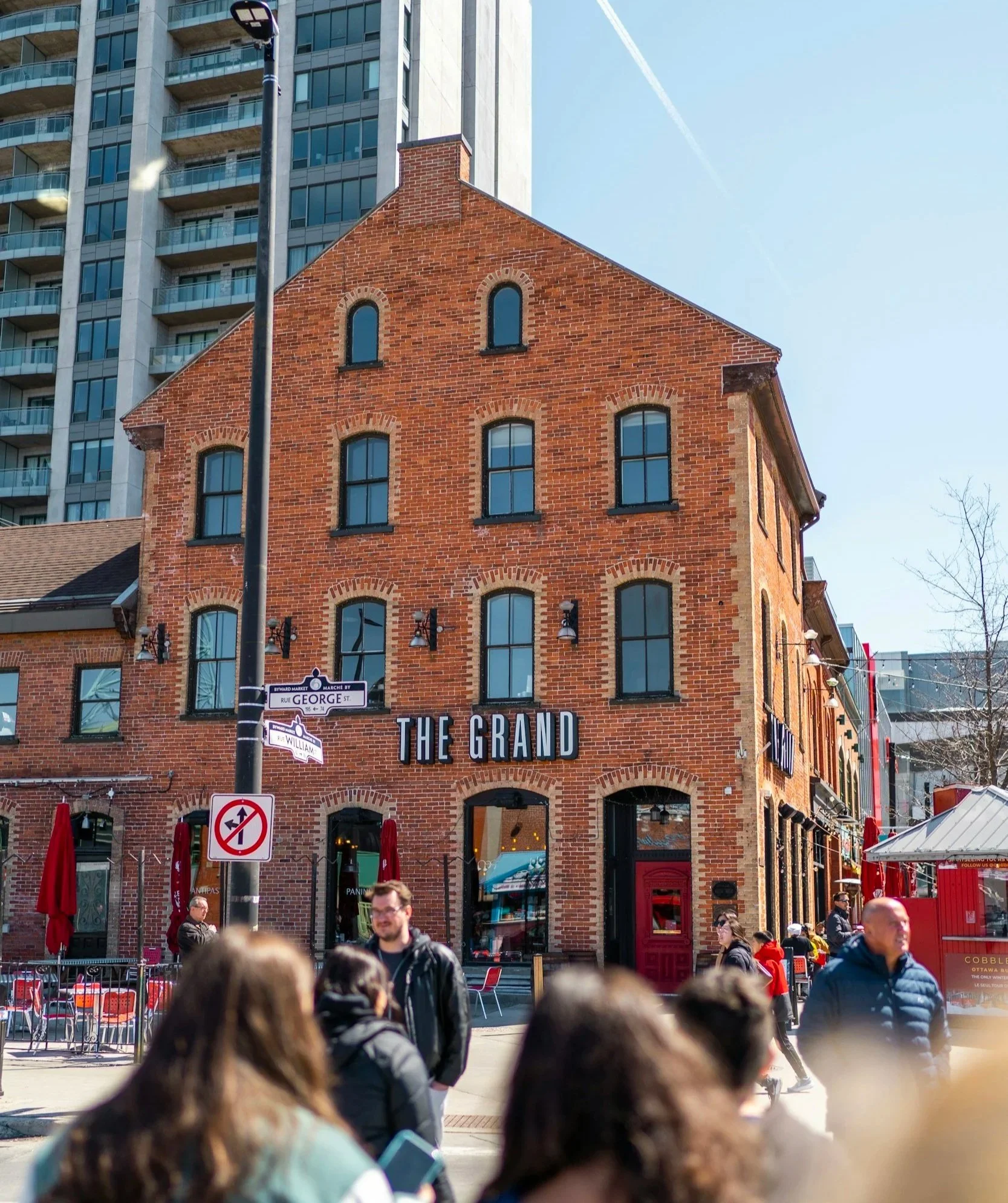The Heritage of The ByWard Market
A Place of Gathering and Growth
Our establishment is nestled within the ByWard Market, a district of profound historical and cultural significance in the heart of Ottawa. More than just a collection of streets, the Market is a living nexus where layers of history—spanning millennia of Indigenous trade, the founding of a capital city, and the evolution of a bustling commerce hub—vibrantly converge.
The Unceded Territory and Its First Peoples
Our location is on the traditional, unceded territory of the Algonquin Anishinàbeg Nation. For thousands of years, the confluence of the three major rivers—the Kichi Zībī (Ottawa River), the Gatineau River, and the Rideau River—made this area a vital junction for trade, travel, and seasonal gathering for the Algonquin and surrounding Indigenous communities. The very spirit of commerce and exchange that defines the ByWard Market today echoes the ancient trading practices that thrived here long before European settlement. The land we stand on is a testament to the enduring presence and deep connection of the Algonquin people to this region.
Layers of History in the ByWard Market
The Market's story is one of constant evolution, marked by distinct eras of development:
The Bytown Foundation (1820s-1840s): The Market's history formally begins in 1826 with the construction of the Rideau Canal, led by Colonel John By. The Market was officially platted in 1827 and established by Colonel By in the 1830s. It was essential for providing fresh produce and goods to the workers and early settlers of "Bytown," the rough-and-tumble logging town that would later become Ottawa. It quickly cemented its role as the city’s primary public square and commercial heart.
The Commercial Heartbeat (19th & Early 20th Century): Through the 1800s, the Market was the engine of local commerce, drawing farmers, merchants, and customers from across the region. Despite devastating fires and the dramatic growth of the city, its function as a central market persisted, becoming renowned for its fresh produce, butchers, and vibrant street life.
A Modern and Diverse Era: Today, the ByWard Market continues its evolution, blending its historic function as a farmers' market with a dynamic mix of independent shops, restaurants, and cultural life. It remains one of Canada's oldest and largest continuously operated public markets, a vibrant, seven-day-a-week destination.
Our Building's History
Built in 1877 as a grocery store by Thomas Coffey, Sr., this building was the Grand Central Hotel from 1889 to 1907, and a Salvation Army hostel from 1908 to 1949. It later beae Oregano’s from 1981 to 2008.
Designated Heritage Property




